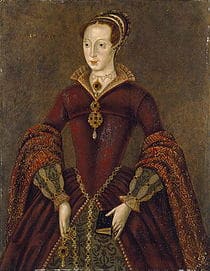
The teenage couple died with dignity and courage, sticking to their Protestant faith right to the end. They were laid to rest in the Chapel of St Peter ad Vincula at the Tower of London.
You can read more about their executions in my article Remembering Lady Jane Grey and Guildford Dudley and you can read a primary source account of their executions in The Executions of Lady Jane Grey and Lord Guildford Dudley: A Primary Source Account.
This month’s Tudor Life magazine is a Lady Jane Grey special – click here to read a sample of it and to find out more.
Rest in peace Queen Jane and Lord Guildford Dudley.
Today is also the anniversary of the death of Blanche Parry, Chief Gentlewoman of the Privy Chamber of Elizabeth I, at the age of 82. Click here to read more about her.